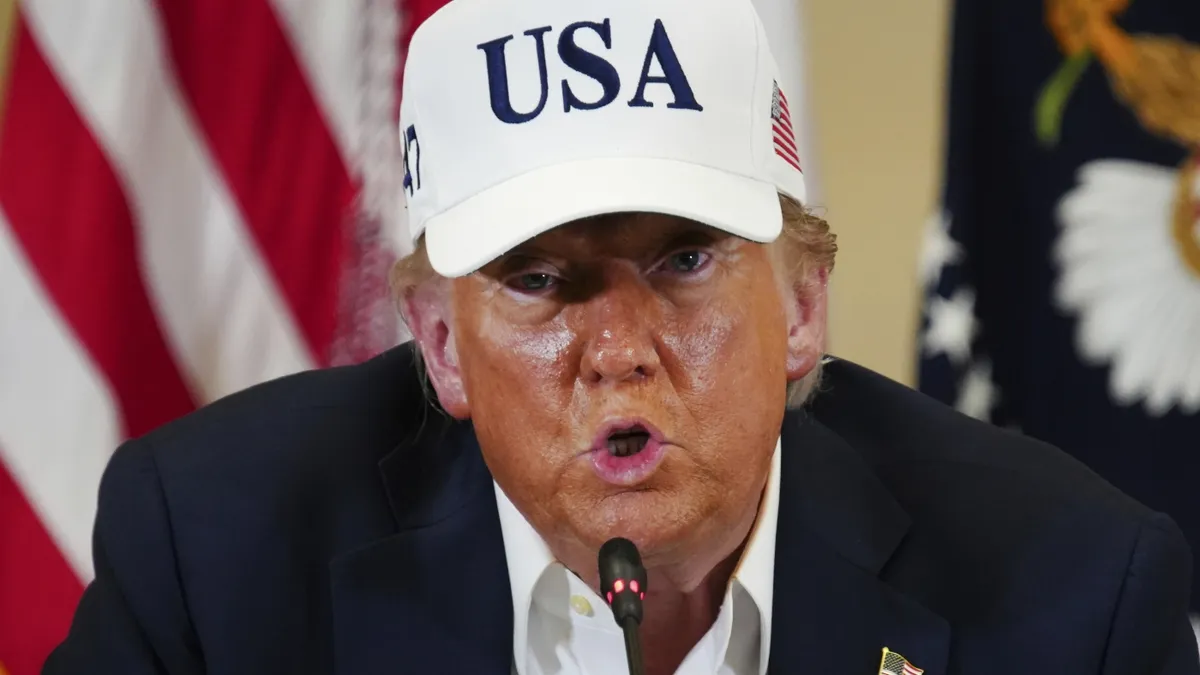
In a significant move, President Donald Trump declared on Saturday that he will impose tariffs of 30% on imports from the European Union and Mexico, effective August 1. This announcement was made via letters shared on his social media platforms, highlighting a series of planned tariffs targeting some of the United States' largest trading partners. The tariffs are part of Trump's strategy as he gears up for the 2024 presidential campaign, promoting them as a means to revitalize a U.S. economy he claims has been exploited by foreign nations for years.
In his correspondence with Mexico's leadership, Trump acknowledged the country's efforts in curbing the flow of undocumented migrants and fentanyl into the United States. However, he criticized Mexico for not doing enough to prevent North America from becoming what he termed a "Narco-Trafficking Playground." Trump emphasized, "Mexico has been helping me secure the border, BUT, what Mexico has done, is not enough."
In his letter to the European Union, Trump highlighted that the U.S. trade deficit with the EU poses a national security threat. He expressed dissatisfaction with the longstanding trade relationship, stating, "We have had years to discuss our Trading Relationship with The European Union, and we have concluded we must move away from these long-term, large, and persistent Trade Deficits." Trump attributed these deficits to the EU's tariff and non-tariff policies, as well as various trade barriers, asserting that the relationship has been far from reciprocal.
In response, European Commission President Ursula von der Leyen reiterated the EU's commitment to dialogue, stability, and a constructive transatlantic partnership. She stated that the EU would take necessary steps to protect its interests, including potential countermeasures if the situation demands it. Trump has warned that his administration would escalate tariffs further if the EU raises its own tariffs against U.S. goods.
With these new tariffs, Trump is effectively challenging the established rules of global trade. For decades, the U.S. and other nations have adhered to tariff rates negotiated during the Uruguay Round, which established a framework where countries could not impose higher tariffs on one nation than on others under the most favored nation principle. This shift marks a significant departure from those agreements.
The Italian government has expressed its intention to closely monitor ongoing trade negotiations between the EU and the U.S., underscoring its support for the EU Commission's efforts. Italian Premier Giorgia Meloni emphasized the importance of reaching a fair agreement, particularly in light of the current geopolitical landscape, stating that a trade war would be counterproductive.
If the tariffs on Mexico come into effect, they may replace the existing 25% tariffs on Mexican goods that do not comply with the U.S.-Mexico-Canada Agreement (USMCA). Trump’s letters did not clarify whether USMCA-compliant goods would remain exempt from these new tariffs after August 1, although the White House previously indicated such exemptions would apply to Canada as well.
As of Saturday, Trump has outlined tariff conditions affecting 24 countries and the 27-member European Union. The EU's chief trade negotiator recently mentioned that a trade deal to prevent increased tariffs on European goods could be finalized soon. The EU, which exported over $553 billion worth of goods to the U.S. in 2022, has a significant economic relationship with America.
Former Congressional Budget Office director Douglas Holtz-Eakin remarked that the recent letters indicate a lack of serious trade discussions over the past few months. He noted that nations are focusing on minimizing their economic exposure to the U.S. instead of engaging in productive negotiations.
The imposition of these tariffs could have far-reaching economic consequences, particularly for Europe. The value of EU-U.S. trade reached an impressive 1.7 trillion euros (approximately $2 trillion) in 2024, averaging 4.6 billion euros a day. Europe's primary exports to the U.S. include pharmaceuticals, vehicles, aircraft, chemicals, and spirits. Trump has previously criticized the EU for its substantial trade surplus, while the U.S. maintains a services surplus that helps mitigate the overall trade deficit.
Before Trump's return to office, the U.S. and EU enjoyed a cooperative trade relationship, characterized by low tariff levels on both sides, with the U.S. averaging 1.47% for European goods and the EU averaging 1.35% for American products. The future of this relationship remains uncertain as both sides navigate the complexities of international trade amidst rising tariffs.